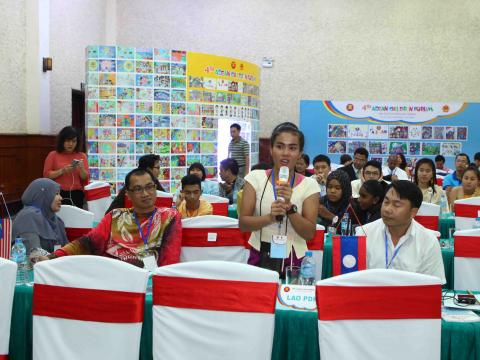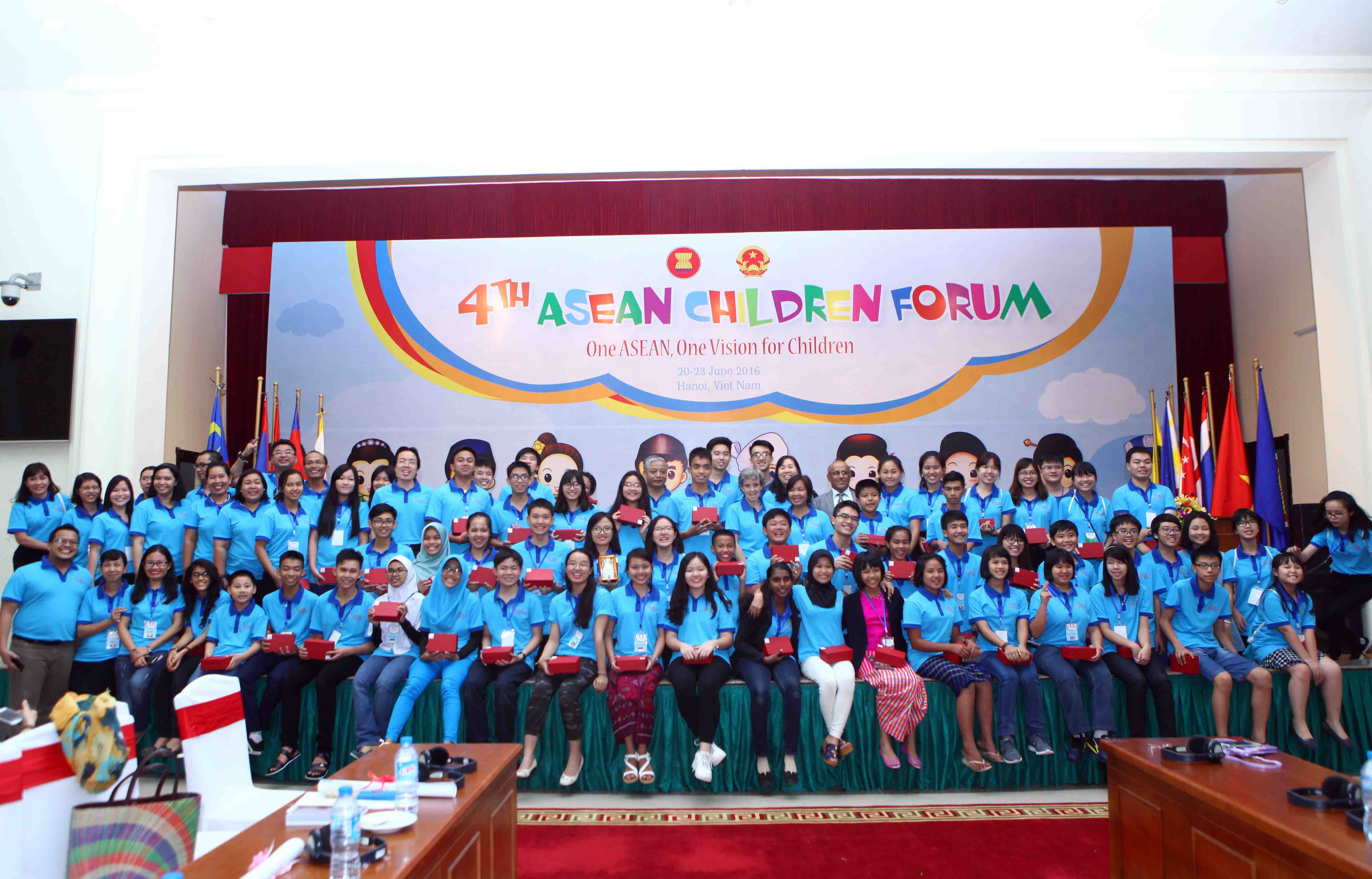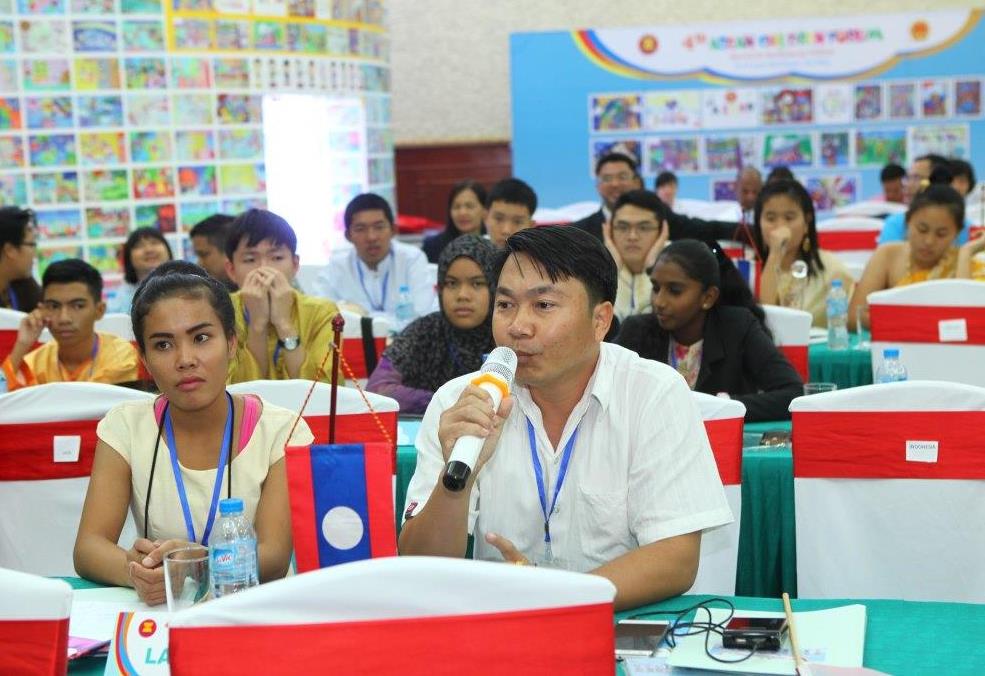A first trip for a rural girl to Viet Nam

A recent World Vision report* reveals over 60 per cent of Laos’ young citizens have never heard of human trafficking. They are often promised good paying jobs, but instead are forced into work that is difficult exploitative, or dangerous.
Lampheung is one of nine children in her family and a fifth grader at secondary school in Xounnabouly district, Savannakhet Province.
She is not tempted by the lure of a dream job, but instead dedicates her time and efforts to World Vision’s End Trafficking in Persons (ETIP) project.
ETIP works to protect children from abuse, neglect, exploitation and other forms of violence, with World Vision joining the government and community leaders to raise awareness of the risks of migration, domestic violence, and trafficking. As such, World Vision has set up children’s clubs in villages across Laos to educate children on their rights and how they can protect themselves.
Lampheung began volunteering with World Vision in her first year of secondary school.
“At first, I just wanted to learn about the issue, so that I could share important information with my sisters working in Thailand,” she says. “But, I developed a strong interest in and passion for it as I continued to learn.”
Lampheung was selected by her peers to speak at the Fourth ASEAN Children Forum, held from 19-26 June in Hanoi, Vietnam. Eager to share her new knowledge, the forum was attended by 35 children from eight ASEAN member countries.
“She was selected because she had experience on leading child club activities and knew about trafficking. We helped her prepare with pre-reading about the forum topics, and on how to dress and how to communicate with others. She was very excited to attend,” said Chansamout Thirakoune, World Vision Youth Led Policy advocacy officer.
The objective of the forum is to build a child friendly ASEAN community, enhancing the participation of children, and promoting the implementation of the rights of children.
Lamphueng shared during the group discussion that she believes community parents and youth require more vocational training and job opportunities in order to prevent child migration and human trafficking.
“I believe that no one wants to leave their village and work in the area that they are not familiar with. Children in my district need to learn more life skills, youth need more vocational training opportunities, and occupations for parents in order to prevent child migration and human trafficking.”
“At the forum I met other young people from different countries from Cambodia, Myanmar, Vietnam, and Thailand. We all shared the same issues with human trafficking like prevention of trafficking, online child protection, and prevention of violence against children.” She continued, “We talked with each other about these issues and created a prevention strategy for young people like us to use. We also created awareness messages for communities and children to help them understand about human trafficking.”
Her mother, 48-year-old Koulab proudly said, “I’m happy to see my daughter working with other children and youth on this issue. It’s not a problem for our family to have her doing something other than housework or working in the field.”
Through community engagement, World Vision has strengthened child protection networks to provide safety measures for migration and safeguard young people from trafficking. Children are empowered to protect themselves and their neighbours from traffickers.
Lamphueng led a group to identify vulnerable youngsters in her village at risk of dropping out of school to seek work in Thailand.
“My dream is that I want to complete my studying of high school grade 7, and I want to continue to college or university, so that I will have knowledge and easily find a job. I will earn a better salary and able to support my family,” Lamphueng shared.
*The Vulnerability Report: Human Trafficking in the Greater Mekong Sub-region
-End-

